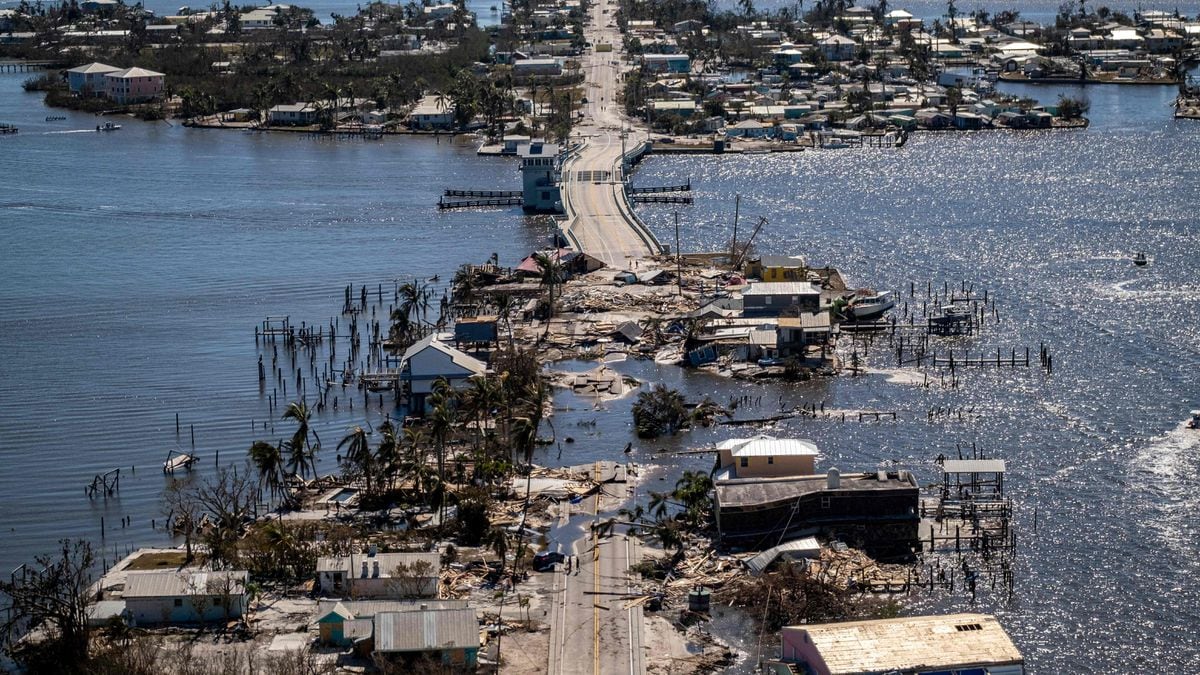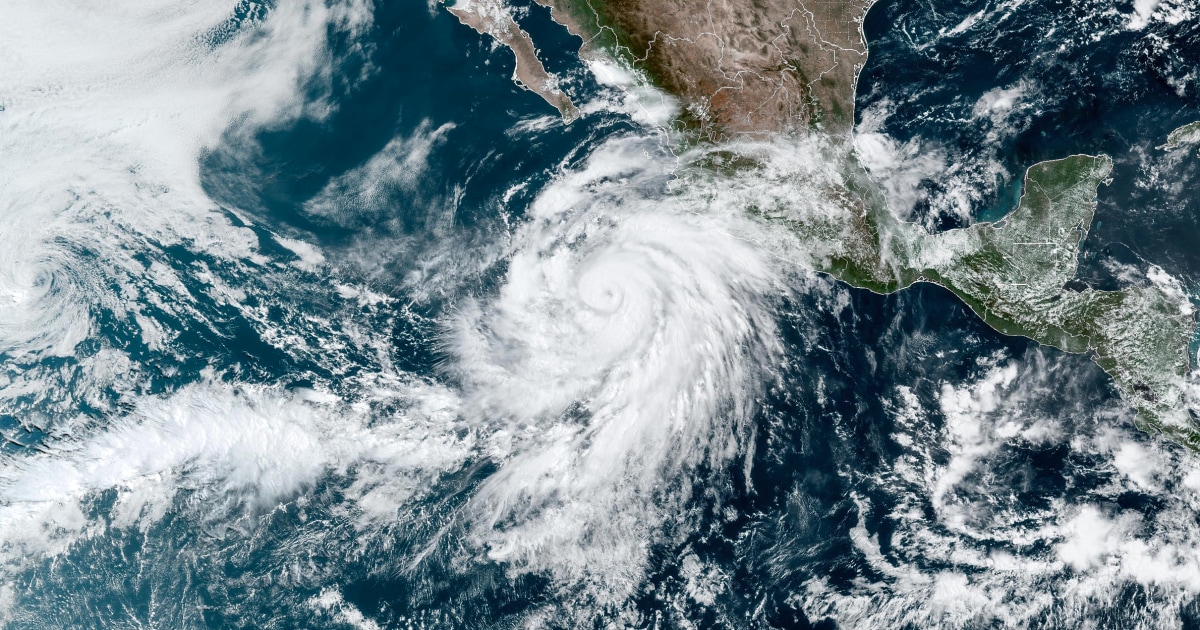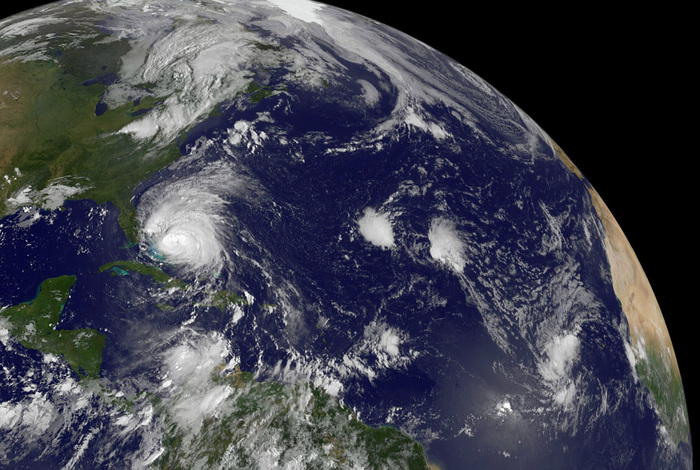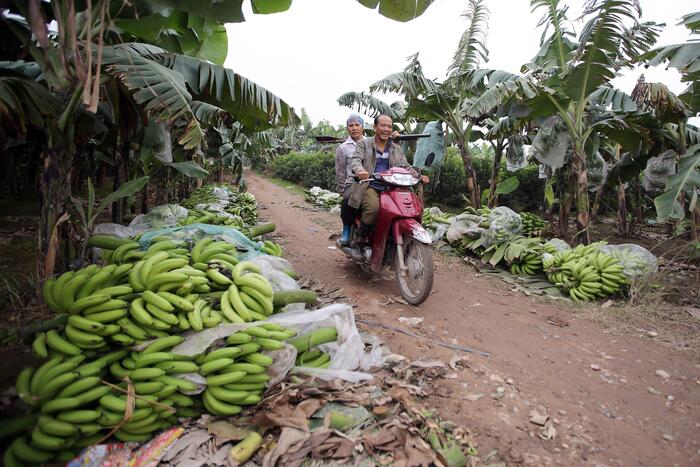EL PAÍS offers the América Futura section openly for its daily and global informative contribution on sustainable development.
If you want to support our journalism, subscribe
here
.
The torrential rains and the winds of the hurricanes that devastate the Caribbean and the southeastern United States every season have always been considered one of the prices to pay for living in some paradisiacal places for their beaches.
But in recent years, a series of especially powerful and destructive storms have raised the question of whether they are really more damaging now than before, and whether, if so, climate change can be blamed for that greater power.
The last one that has provoked this question has been Hurricane Ian: after leaving Cuba in the dark, the storm gained strength as it crossed the Strait of Florida and made landfall on the west coast of that peninsula with winds of 250 kilometers per hour, at the limit of category 5 on the Saffir-Simpson scale, the maximum contemplated.
In that state, the cyclone has left nearly 100 dead and a trail of floods and destruction that is unusual even in that area accustomed to coexisting with tropical cyclones.
A study published just after that hurricane hit Florida attributes at least 10% of the rains left by the storm in that state to climate change.
Although it is an issue on which governments still do not have a consensus and that tends to be politicized, the scientific world has advanced in recent years with reports that suggest an increasingly clear link between the greater power of hurricanes and the effects of the man about the weather.
The World Meteorological Organization (WMO) itself, belonging to the United Nations, has recognized that global warming will lead to an increase in the proportion of more powerful hurricanes: those of category 3 (with sustained winds above 154 kilometers per hour), 4 (with winds over 209 kilometers per hour) and 5, over 252 kilometers per hour.
In addition, he has said that an increase in the amounts of rain associated with these storms is expected, while the rise in sea level and the urban development of the coast is worsening the impact of the floods.
"Climate science is increasingly able to show that many of these extreme events we are experiencing are becoming more common and more intense due to human-induced climate change," WMO Secretary-General Petteri Taalas recently acknowledged.
The official also called for a review of prevention and warning systems "to be more resilient to current and future climate risks in the most vulnerable communities."
América Futura spoke with two experts about what is known about this relationship, what cannot yet be determined, and how potentially affected communities should prepare.
Wetter Hurricanes
For Kerry Emanuel, meteorologist and emeritus professor of Atmospheric Sciences at the Massachusetts Institute of Technology (MIT), there is some consensus among experts on how climate change affects tropical storms.
"What we've known for quite some time is that the hotter the temperature, the wetter these storms are and they drop more water," she explains in a telephone interview.
"Flooding is usually the biggest killer in these types of storms and also the biggest source of damage."
People use a kayak and paddle board to navigate a flooded street after Hurricane Ian hit Orlando on September 29. JIM WATSON (AFP)
One of these pieces of evidence is the study published after Ian hit Florida, which ensures that global warming was the cause of at least 10% of the precipitation it left on that state.
"And that's a somewhat conservative or low estimate of the effect that we think climate change had," says one of its authors, Professor Michael Wehner, a climate scientist at the Lawrence Berkeley National Lab.
The analysis, done jointly with Professor Kevin Reed and which has not yet been peer-reviewed or published in any scientific journal, compared the water that fell during that storm with twenty computer-generated scenarios of the hurricane making landfall in that State, but in a world without climate change.
For this study, Wehner and Reed replicated the model of another they published this year in the journal
Nature Communications
in which they concluded that rising temperatures from greenhouse gases led to more rainfall during hurricanes in the 2020 season.
Kerry Emanuel of MIT has seen Wehner and Reed's study and although it seems like "respectable" work, he prefers not to make such specific attributions.
"It's not that the science behind it is wrong, but the way it's communicated can be a bit confusing," she says.
And he says it's like someone asking a doctor after the death of a smoker from lung cancer how much of that cancer was caused by tobacco.
“Nobody would say it like that.
But a doctor can tell you that your grandmother's smoking increased her chance of getting cancer at 70″, she maintains.
"That may be a more sensible way of putting it and I prefer to talk about how climate change increases the chance of flooding."
The National Aeronautics and Space Administration (NASA) reported on Twitter on September 30 that, to reach Florida, Ian traveled over "the warm waters of the Gulf of Mexico", an area with temperatures “equal to or greater than 27.8 degrees centigrade”.
That, in the opinion of that agency, could intensify the hurricane, something that happens "as thermal energy is transferred from the sea to the atmosphere."
Hurricane Ian moved over a major source of energy on September 27: the warm waters of the Gulf of Mexico.
Warm water can support and intensify hurricanes as thermal energy is transferred from the sea to the atmosphere.
https://t.co/zFIvQbrEna pic.twitter.com/kKvwdtk6iR
– NASA in Spanish (@NASA_es) September 30, 2022
"In a way, climate change overloads hurricanes with rain" because of higher humidity in the air, says Wehner.
The water, he explains, affects land floods, such as those we have seen in Florida in recent days, but also those caused by storm surge, something especially relevant in a State that has seen how the sea level rises driven by global warming.
"In much of Florida, the sea level has risen a foot (30 centimeters)," he says.
“The question we can't answer exactly is how much climate change affects storm surge.
I'm sure it's a lot, but I can't quantify it,” he maintains.
More powerful and faster intensifying storms
Both he and Emanuel acknowledge two other effects of climate change on hurricanes: It makes them more powerful and it intensifies faster, thus leaving less time for evacuations and the preparation of affected communities.
“We have known for 30 years, at least in theory, that tropical cyclones can intensify in warmer climates.
And that is what seems to be happening now”, explains the MIT professor.
“And then there is the fact, on which there is quite a lot of consensus already, that in warmer weather these storms grow faster.
This again comes from theory, but observation in recent years has shown it as well."
A woman affected by Fiona in front of her house in Toa Baja, Puerto Rico, on September 20. Stephanie Rojas (AP)
Since 2017, seven category 4 and 5 hurricanes have made landfall in the United States, leaving damage that the US National Oceanic and Atmospheric Administration considers “catastrophic” (Harvey, Irma, María, Michael, Laura, Ida and Ian).
In addition, 16 of the 20 hurricanes that have been recorded in the last two seasons in the Atlantic have experienced what is considered a "rapid intensification", when their winds increase by at least 56 kilometers per hour in 24 hours.
That was the case, for example, with Fiona, which after making landfall in mid-September in Puerto Rico as a category 1 hurricane quickly intensified to a category 4. The cyclone left the island in the dark five years after another powerful storm, Maria, will sweep her away.
Where Emanuel acknowledges that there is still not much consensus among scientists is how climate change will affect the frequency of hurricanes.
“However, as the intensity is increasing, we expect the frequency of the higher category storms — 4 and 5 — to increase.
Although in general terms, the number of storms decreases, we expect to see an increase in the frequency of the highest category ones”.
With all these elements, the MIT professor believes that governments must prepare to act more quickly in the face of weather forecasts and better train those responsible for carrying out evacuations.
Professor Wehner, of the Lawrence Berkeley National Lab, agrees that it is necessary to make sure that people comply with evacuation orders.
In addition, he believes that these characteristics can make building codes be revised to reduce the years and even that prohibitions be issued to repopulate certain vulnerable areas, although he recognizes that this is a political decision.
“The dangers of climate change are not a problem for our grandchildren or our children.
The problem is here and now and the faster we accept it, the faster we can do something”, he concludes.









